
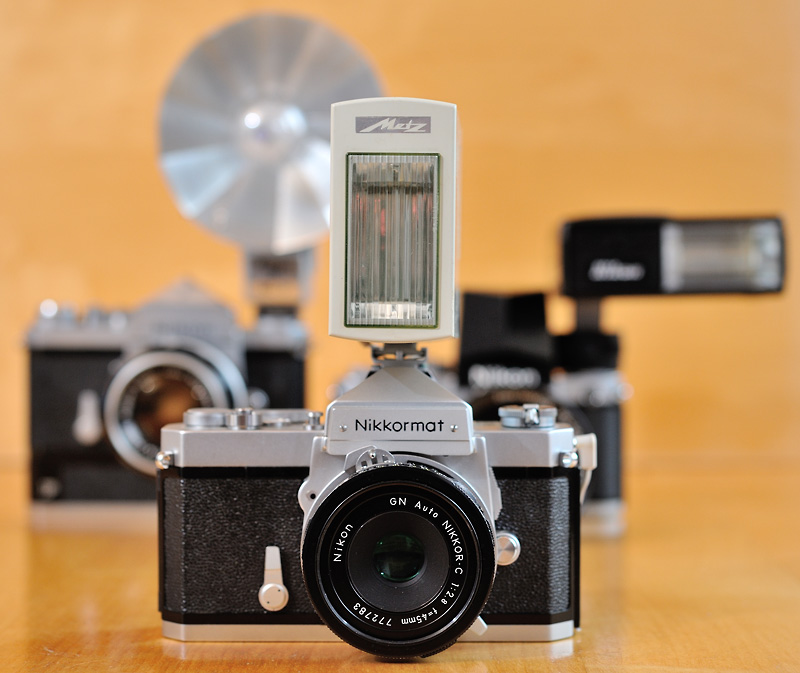
|
|
Nikkormat FTN plus GN Nikkor 45mm f/2.8 plus Metz Mecablitz 111 (a popular small electronic flash in Germany in the 60s). In the background: Nikon F with BC-7 bulb flash unit and Nikon F2 with SB-2 Speedlight with automatic flash control (introduced in 1972). |
Until the late 60s electronic flashes were only able to fire at maximum power (flashbulbs anyway). An index for the power of a flashlight is the so-called guide number, which depends on the film speed (resp. the current ISO setting of your digital camera) and the unit of length in use.
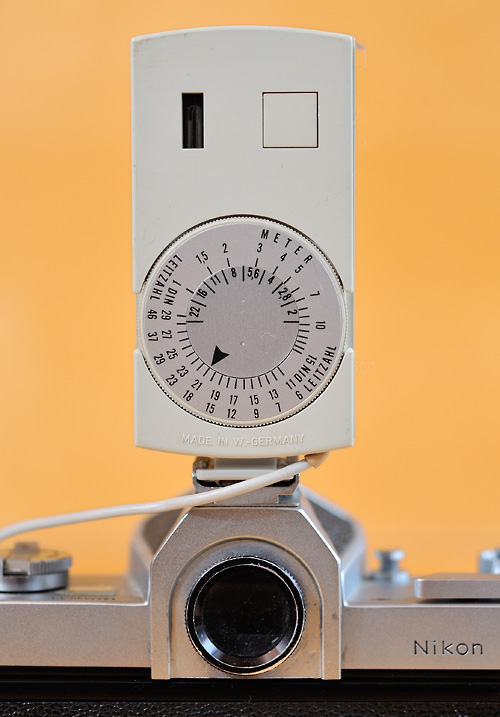
|
|
Many flashes of the 60s have got a disc calculator on the back. If the arrow points to the proper film sensitivity you can read out the relation between F-stop and distance. Please note: "Leitzahl" means guide number and "DIN" is the old German measuring unit for film sensitivity (18 DIN = ISO 50, 21 DIN = ISO 100, 24 DIN = ISO 200, etc.). |
Example: the Mecablitz 111 shown here has a metre-based guide number of 18 at ISO 100. If your are photographing at F4, the reach of the flash is 18/4 = 4.5m. Thus, for optimal exposure your subject should be 4.5m away from you. If it is significantly closer it will be overexposed - if it is further away it will be underexposed. But what can you do if your subject is only one metre away from? You must stop down the lens! Try F16: 18/16 = 1,13m, that will work (don't be too precise).
The formula - guide number divided by the current F-stop number is equal to the distance - is easy to manage with some mental maths (or by using the calculator disc shown to the right). But if your subject is a fast and erratic one (e.g. your 3-year-old child), it will be not that easy. The solution for such problems was the automatic flash control invented in the 60s and broadly introduced in the early 70s. Via a sensor on the frontside of the flash unit an electronic circuit shuts off the flash when the light reflected by the subject has reached the amount for proper exposure. That allows you to go closer to your subject without changing any settings. The above-mentioned formula is still valid for calculating the maximum reach.
In 1969 Nikon introduced the GN Nikkor. GN stands for guide number - it is a special lens for simplifying flash photography with non-automatic flashes. There is a simple but clever idea behind this lens. But it came a bit too late and became obsolete soon (Rollei introduced the first automatic flash in 1967). Nevertheless, the GN Nikkor is an F-Mount oddity!
The GN Nikkor allows to couple focus ring and aperture ring:
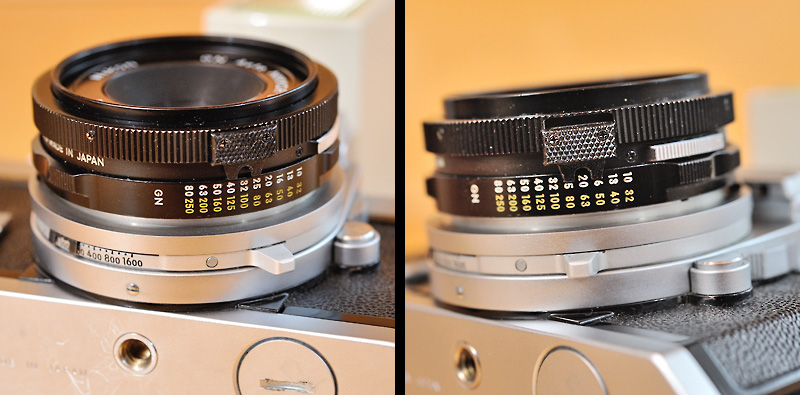
|
|
Left: the GN Nikkor uncoupled (then it behaves like a normal lens) - right: coupled for guide number 20 (16 and 20 is possible, but not 18). The white numbers are metre-based guide numbers, the yellow ones are feet-based. |
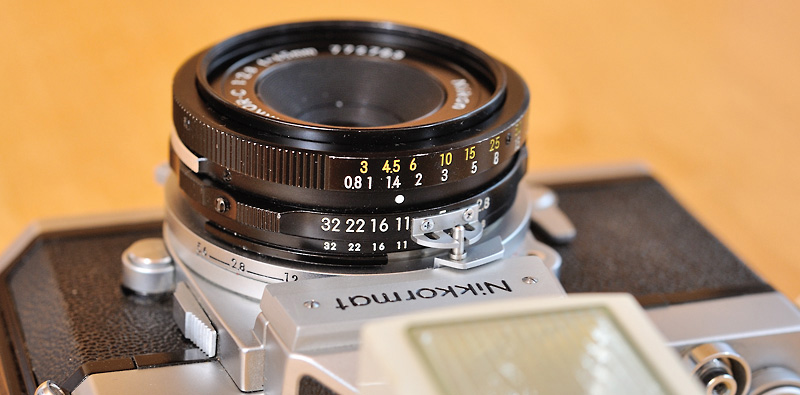
|
|
Coupled GN Nikkor: focus ring and aperture ring rotate simultanously - your subject is properly exposed when it apears sharp in the finder! |
My sample is the second version (improved coating) of the the 45mm f/2.8. The production of the GN Nikkor was stopped in 1977, AI versions were not produced. But Nikon made AI aperture rings for the GN Nikkor to enable an AI conversion by Nikon service. My sample is such an officially modified (aka "factory AI'd") lens.
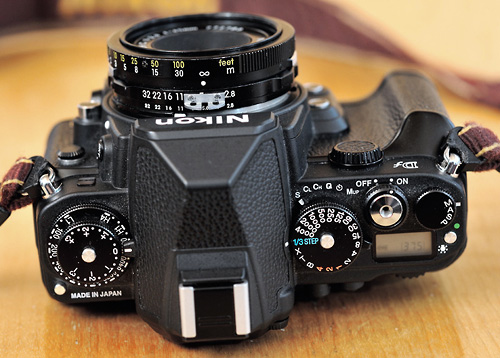
|
|
Although the Df is Nikon's smallest fullframe DSLR, the GN-Nikkor appears really small. |
I wanted to find out whether the GN Nikkor is a usable lens on our today's DSLRs.
The biggest advantage of this lens is the small size, it is a real pancake lens. But in terms of handling it is more of a problem because the lens is too small. The aperture ring and the focus ring are very thin. Mounting and dismounting is difficult, because you don't know how to grab the lens. Overall I have the same handling problems I had with the 45mm f/2.8P I tried a few years ago.
The closest focus is only 0.8m. That is a serious restriction! In contrast, the 50mm manual focus Nikkors have a closest focus between 0.45m and 0.6m.
A confusing issue is this:
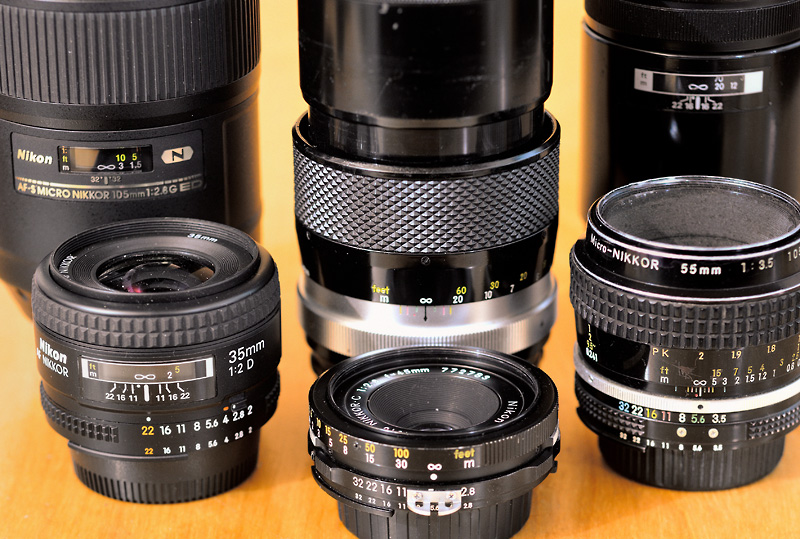
|
|
Do you see the difference between the GN Nikkor and every other Nikkor? |
Yes, the focus direction is reversed. That was neccessary because of the GN coupling mechanism. The reversed focus (=Canon-like) of many third-party lenses is a reason for me not to think about these lenses! Manual focussing slows down if you swap between lenses with different focus directions.
The GN 45mm consists of only four elements. Nevertheless, it is a sharp and contrasty lens. But it is prone to flare, especially if the sun is just outside the frame. And the bokeh is clearly on the bad side. See sample images below.
My conclusion: the GN Nikkor is more a lens for collectors than for today's photographers.
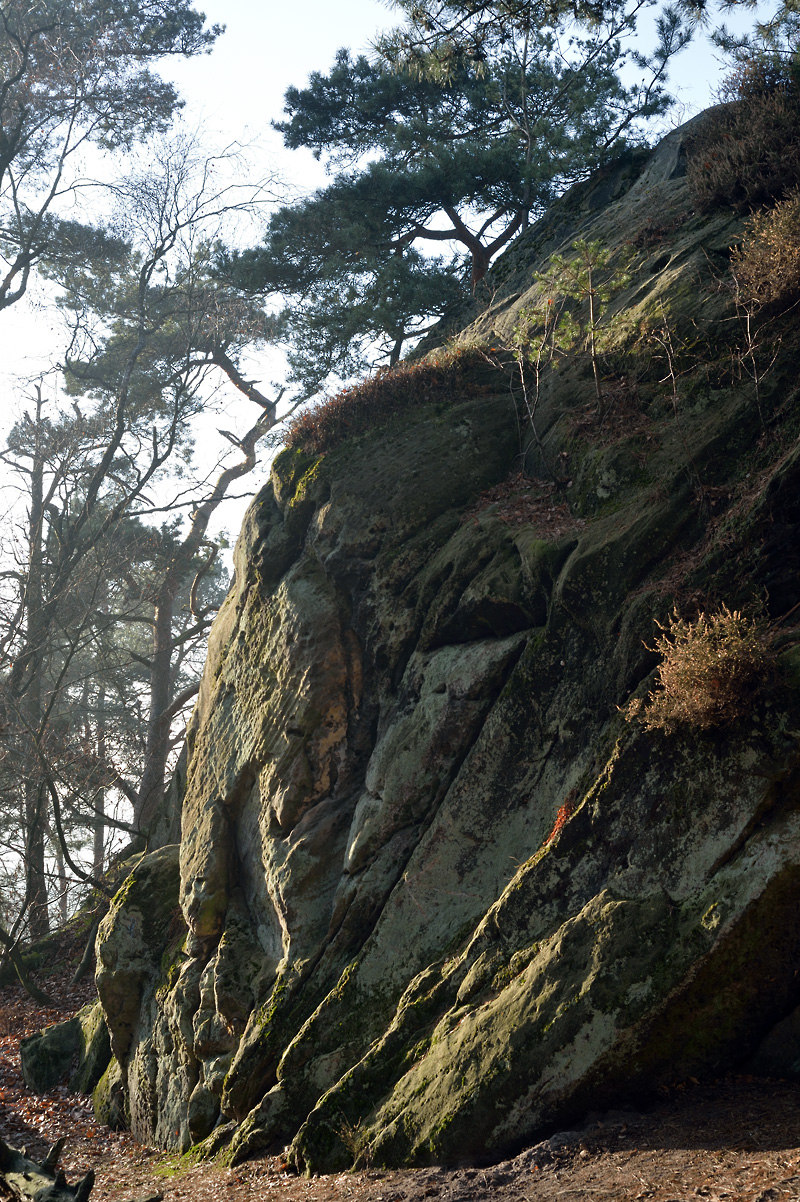
|
|
Rock formations in the westernmost part of the Teutoburg Forest. Nikon Df plus GN Nikkor 45mm f/2.8 at F11. |
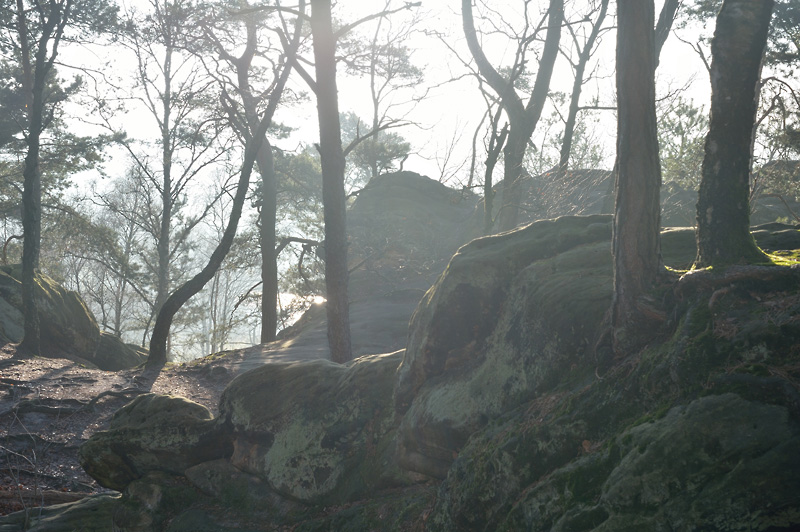
|
|
Shot at F11. The sun is just outside the frame. I used a HN-3 hood. Maybe, the lens would show less flare with the recommended HN-4. |
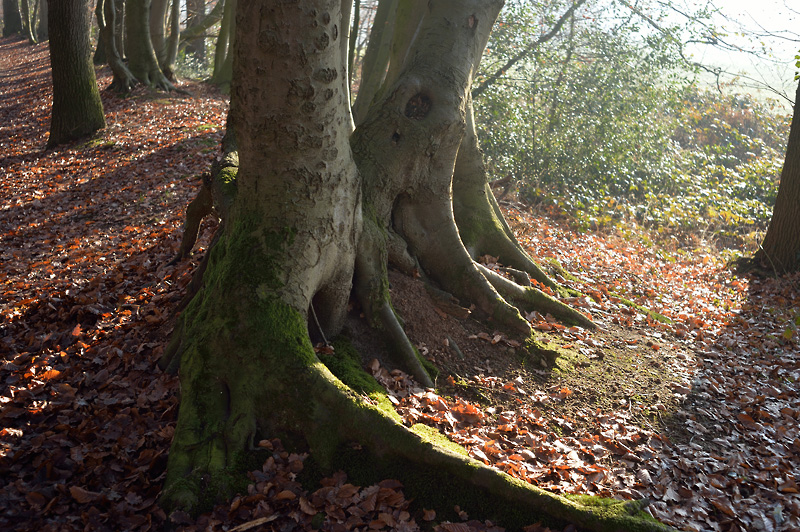
|
|
The GN Nikkor produces a nervous bokeh, even stopped down a bit. This image was shot at F5.6. See 100% crop below: |
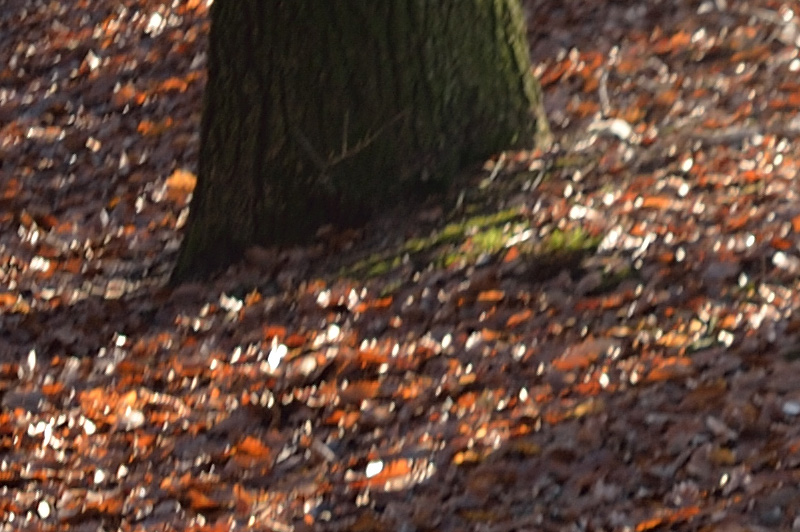
|
|
|